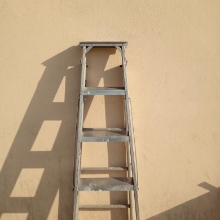The idea of saving and buying your own home can feel a little daunting. But with budgeting and smart financial planning, you can make your dream of owning a home a reality.
How to save for a down payment
Here is a 4-step plan to help you save for a down payment on your first home.
1. Know how much you can afford
You may want a 3-bedroom, detached home downtown, but can you afford it? The first step is to understand how much you can afford in monthly mortgage payments.
The size of the mortgage you can take on, plus what you can save for a down payment, equals the price of the house you can afford. If you want more house, you’ll have to save more for the down payment.
But before you start budgeting and planning based on that number, consider the additional costs buying a home entails. Remember realtor and lawyer fees, as well as taxes, can add up.
Many people also forget that buying a new place generally means furnishing one, which can be a significant cost. So make sure you have a clear idea of what these fees are going to be and round up. It’s better to overestimate the costs.
Once you have that information, you’re ready to create a budget.
2. Make a budget and set a timeline
This will likely be the biggest purchase of your life. That’s why it’s important to work with a financial advisor. They can work with you to make a plan and help hold you stay on track.
There are different ways to save for a down payment:
- Registered retirement savings plan (RRSP): If you qualify for the Home Buyer’s Plan, you can use up to $35,000 of your RRSP savings ($70,000 for a couple) to help finance your down payment.
- Tax-Free First Home Savings Account (FHSA): This registered investment allows Canadian residents to use up to $40,000 to buy their first home. You can hold different investments in a FHSA, including mutual funds and segregated funds. Any investment growth and withdrawals from a FHSA will be tax-free.
- Tax-Free Savings Account (TFSA): A TFSA is another great choice for saving for a down payment. They are easy to use and withdraws are tax free.
Figure out how much money you will need to save monthly to attain your goal on time. Create an automated transfer, either monthly or bi-weekly, depending on your pay period. This way the money automatically goes into your RRSP or TFSA.
3. Review your savings regularly
Now that you’ve got a plan in place, revisit it every so often. You’d be surprised at how much change can happen in a short period.
Perhaps you’ve gotten a promotion with comes with a higher salary. You may want to increase your monthly savings towards your house deposit.
In addition to your own personal circumstances, there are broader factors at play in the economy. For example, house prices often fluctuate. Revisiting your savings plan can help ensure you’re still on track to buy the home you want.
4. Plan for emergencies
You’ve saved up enough for your down payment and now you’re ready to buy. But throwing every penny of your savings into a mortgage might not be the best idea. It’s important to have a safety net.
Ensure you have some savings left over in a TFSA. That way it can easily be withdrawn, tax-free, in case of an emergency. After all, a broken furnace or a leaky roof in your new home won’t be a cheap fix.
Buying your first home
You’ve estimated costs, budgeted and even managed to save a little extra in your “just-in-case” account. Now you’re ready to find that perfect place. Work with your mortgage broker and financial advisor to make sure you haven’t missed anything.
Once you’ve found “home,” have a lawyer review everything before you sign on the dotted line.
After you’ve completed the process, it might feel a little overwhelming that you’ve made such a big purchase. But you should feel very proud of yourself. You set a goal and with a lot of hard work and dedication, you accomplished it.
Read more:
- How much does it cost to own a home?
- Buying a house: What happens after your offer is accepted?
- How to pay off your mortgage faster
This article is meant to provide general information only. Sun Life Assurance Company of Canada does not provide legal, accounting, taxation or other professional advice. Please seek advice from a qualified professional, including a thorough examination of your specific legal, accounting and tax situation.



